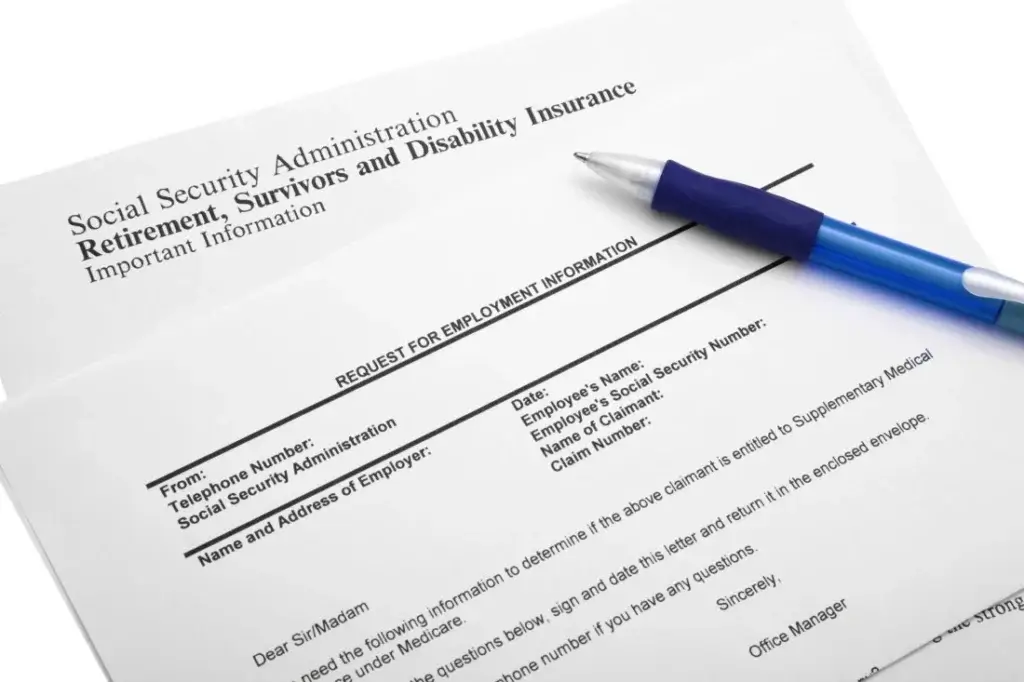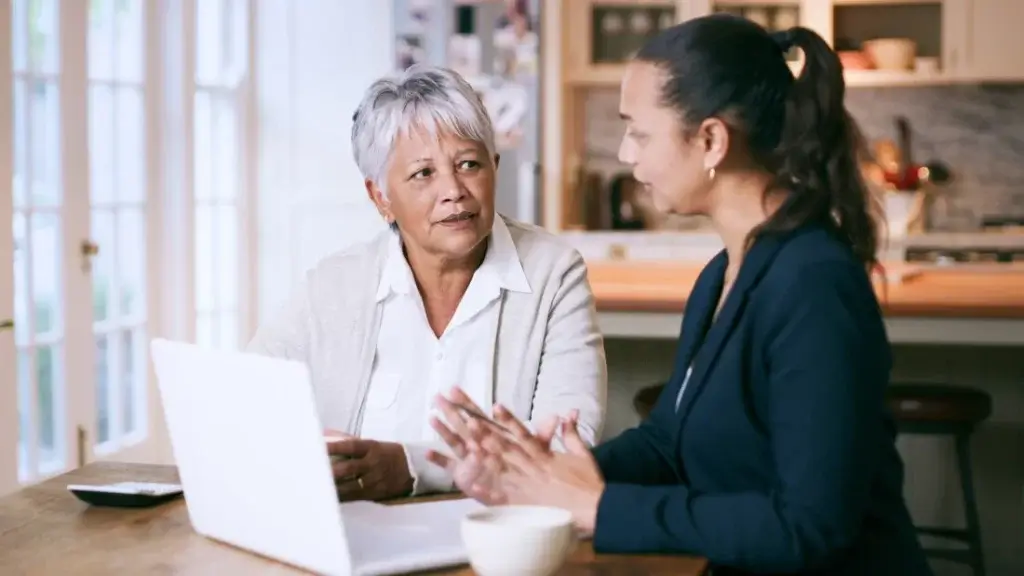Important: We updated this article in February 2024 in order to ensure all info below is accurate. The disability application process takes more time than you might think. And that’s true for both federal disability benefit programs from the Social Security Administration. According to Social Security Administration reports, it takes 218 days to process initial claims, on average. Social Security Disability Insurance (SSDI) or Supplemental Security Income (SSI) claims use the exact same medical review standards. However, the two programs differ on income and asset limits for qualified applicants.
How to Qualify for Social Security Disability Insurance Benefits
If you worked at least 5 in the last 10 years and paid Social Security taxes, you’re more likely to qualify for Social Security Disability Insurance (SSDI) benefits. In addition to earning 40 Social Security credits during your work history, all the following must be true:
- You are unable to work for at least 12 months in a row, specifically because of a medical condition.
- You’re not currently drawing any other Social Security benefits on your own work record. That includes regular Social Security, early retirement, or Supplemental Security Income (SSI).
- Your own personal monthly income is less than $1,550 at the time when you apply. If you’re still working and earning more money than that, then you cannot quality for SSDI benefits.
You can apply online, over the phone, in person at any SSA field office, or through an experienced attorney for free. If you decide to start the disability application process in person, plan to spend at least 4 hours filling out paperwork.

Haven’t Worked Recently or Paid Social Security Taxes? Apply for Supplemental Security Income Instead
Unlike Social Security Disability Insurance, SSI benefits have no work history eligibility requirements for applicants. Instead, the program pays benefits to people in financial need who also fit one of the following descriptions:
- At least 65 years old on the date they start the disability application process (you’re approved on the basis of age alone)
- Blind
- Disabled
If all monthly income for your entire household added together is less than $1,550, you may be eligible for SSI benefits. You must also own less than $2,000 in assets you can easily sell for cash, including your bank account balance. Couples eligible for SSI must fall below the $3,000 asset limit.
Important: You cannot complete the disability application process for SSI benefits online. Your best bet is to contact the SSA for an appointment at your local Social Security office. You can do that online or by calling 1-800-772-1213 toll free Monday through Friday, 8am-7pm EST. Deaf or hearing impaired people who wish to apply for SSI benefits should use the TTY number instead: 1-800-325-0778.
How Long Does the Disability Application Process Usually Take?
The SSA recommends people start the disability application process as soon as possible after their diagnosis. That’s because the disability application process and review period takes anywhere from a few months to a couple of years. Federal law also requires a five-month waiting period before you can receive any disability benefits.
It takes most people anywhere from a few hours to weeks or months to complete the disability application process.

Applying for disability benefits is often complex and takes a lot of time. And with certain medical conditions, waiting that long for disability benefits means missing doctor visits (or worse). High medical bills or unpaid living expenses add stress that can make your health problems worse. So, expect to wait at least 3-5 months for the SSA to review your disability application before hearing a decision.
5 Ways to Speed Up the Social Security Disability Application Process
The SSA fast-tracks the disability application process for anyone who’s terminally ill or has a Compassionate Allowances condition. But there are other ways the SSA to speed up your disability application process and get paid faster. Learn five ways to skip to the front of the line and fast track your disability application process below.
1. CAL conditions
Compassionate Allowances (CAL) are medical conditions the SSA deems so severe that they automatically count as disabilities. There are currently more than 250 conditions on the SSA’s CAL list. It includes many different cancers, such as acute leukemia and non-Hodgkin lymphoma, and debilitating diseases, like Huntington’s. The SSA automatically fast-tracks the disability application process for any CAL condition. As a result, you may get your first payment just 14 days after applying for SSDI or SSI.
2. Quick Disability Determination process (QDD)
Quick Disability Determinations (QDD) can speed your disability application process up significantly. The QDD process happens when someone likely has a qualifying disability and medical evidence is already available. Identifying QDD claims helps the SSA prioritize its workload. The agency is constantly changing and adding to the QDD process to put more people through.
You don’t have to fill out special forms to get your disability application flagged for the CAL or QDD. If your condition is on the CAL list, then the SSA automatically flags your disability application for faster review. The CAL list helps ensure those with severe disabilities get the help they need faster. For the QDD process, the agency says it uses a computer system to determine eligibility for first-time applicants.
3. Get a Social Security attorney to help you complete the disability application process for free.
Perhaps the best way to speed up your disability application process is having a Social Security attorney file your claim. While you can apply on your own, having an attorney file makes the SSA 3x more likely to pay you disability benefits within 6 months.

Attorneys can request (and pay for) medical records that support your claim without charging you any money up front. Lawyers can also help you complete your application forms using language that makes it clear you meet a disability listing in the SSA’s Blue Book.
4. Ask your local representative or senator to launch an inquiry about your disability application.
Asking either your local representative or senator to launch a congressional inquiry may speed up the disability application process. While not all of these inquiries will work, they do result in some appeal hearings moving faster.
5. Get a dire need letter.
One of the hardest (and longest) parts of the disability application process is if you must appeal a denial. There aren’t many Social Security judges, and the wait for hearings is typically more than a year. For this reason, it’s hard for them to provide a quick ruling on your disability application.
People who apply for SSDI or SSI and desperately need help now can get a dire need letter. This letter explains why you urgently need financial assistance right now. Dire need examples include:
- Losing access to medication needed to treat your disability
- Getting evicted from your home
- Too little money to pay for shelter, food, clothing, or access to necessary medical treatment
Find Out If You’re Eligible for Disability for Free Before You Apply
All disability attorneys offer free consultations to people who want to start the disability application process. This is a fast, easy way to learn if you’re eligible for benefits before filling out all that paperwork. It starts with one free phone call where you can also get answers to specific questions about SSDI or SSI benefits.
Even better, all Social Security lawyers work on contingency. In other words, if you’re not approved for benefits, then you owe your lawyer $0. And if you’re approved, then you’ll only pay one small fee.
Want to know if you’re eligible for disability right away? Click the button below to start your free online benefits quiz now and an expert will call with your results during weekday business hours:
Get Your Free Benefits Evaluation
Lori Polemenakos is Director of Consumer Content and SEO strategist for LeadingResponse, a legal marketing company. An award-winning journalist, writer and editor based in Dallas, Texas, she's produced articles for major brands such as Match.com, Yahoo!, MSN, AOL, Xfinity, Mail.com, and edited several published books. Since 2016, she's published hundreds of articles about Social Security disability, workers' compensation, veterans' benefits, personal injury, mass tort, auto accident claims, bankruptcy, employment law and other related legal issues.

